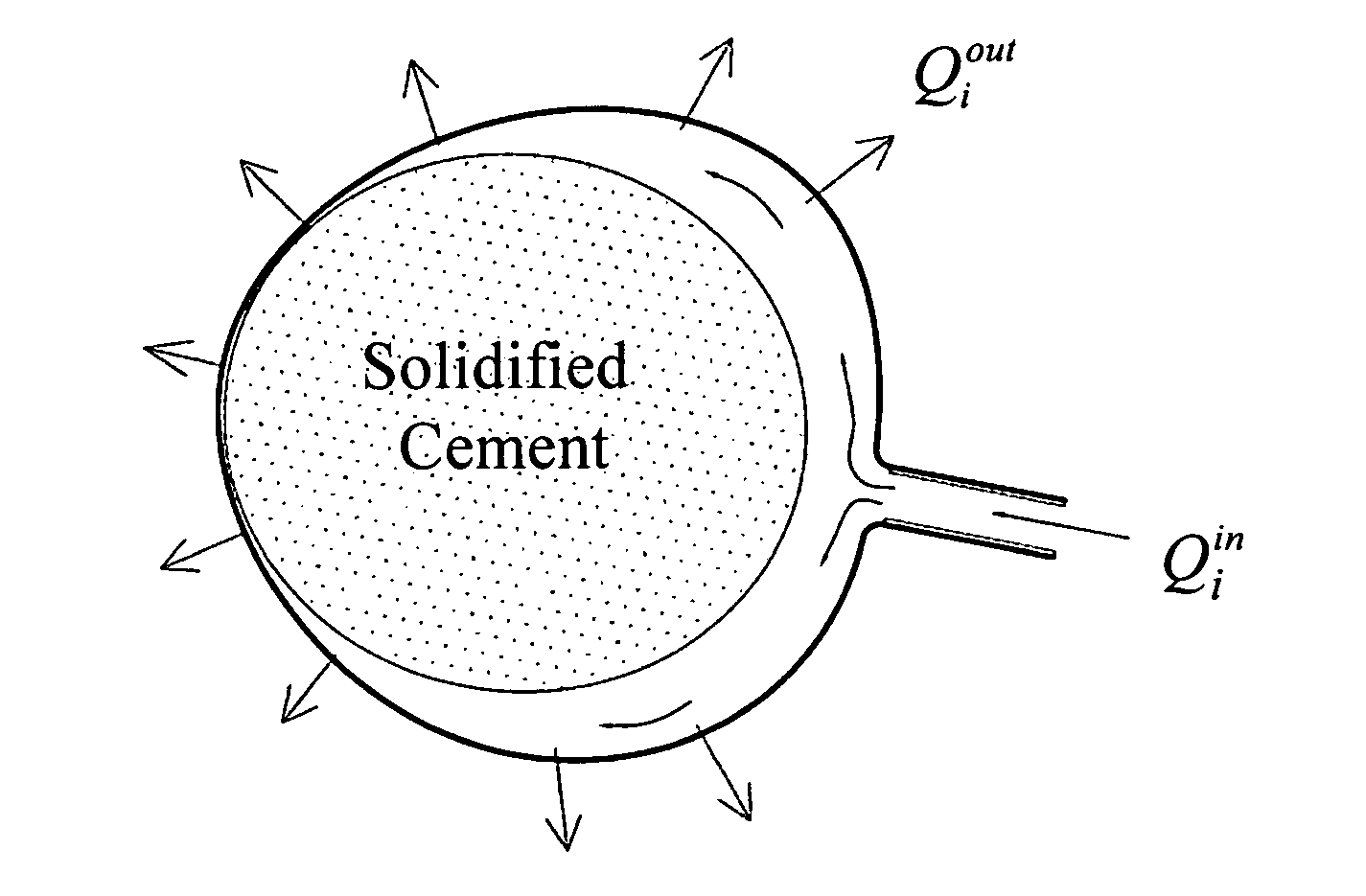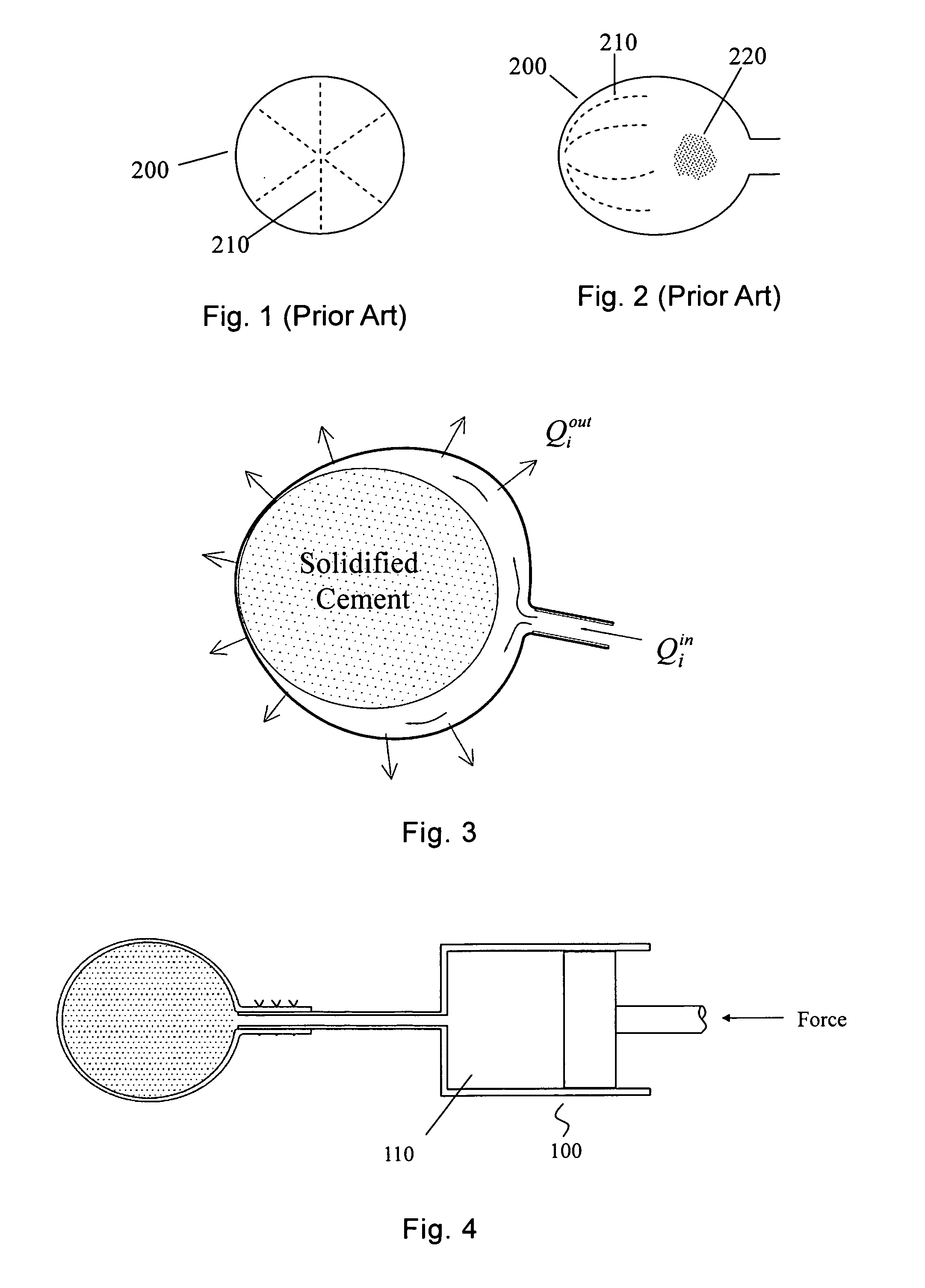Method for forming a bioresorbable composite implant in a bone
a bioresorbable composite and bone cavity technology, applied in the field of bone cavity bioresorbable composite implants, can solve the problems of increasing the uncertainty/risks of cement performance, reducing the biomechanical properties of cement, and reducing the performance/properties of cement, so as to improve the compressive strength
- Summary
- Abstract
- Description
- Claims
- Application Information
AI Technical Summary
Benefits of technology
Problems solved by technology
Method used
Image
Examples
Embodiment Construction
[0034]The present invention discloses a method for forming a composite implant in a bone cavity comprising (a) preparing a first bone filler comprising a cement paste; (b) inserting a pocket into said bone; (c) injecting said first bone filler into said pocket, wherein said injecting is carried out with a means which is able to be operated outside said bone cavity; (d) allowing said cement paste at least partially harden in said pocket, wherein said cement paste in said pocket is optionally under a pressure while said cement paste is hardening in said pocket; (e) opening said pocket, wherein said opening is carried out with a means which is able to be operated outside said bone cavity, and the resulting opened pocket is attached to said means; (f) separating the resulting opened pocket from said hardened cement, wherein said separating is carried out by removing the resulting opened pocket from said bone cavity with the hardened cement remaining in said bone cavity; (g) inserting a ...
PUM
 Login to View More
Login to View More Abstract
Description
Claims
Application Information
 Login to View More
Login to View More - R&D
- Intellectual Property
- Life Sciences
- Materials
- Tech Scout
- Unparalleled Data Quality
- Higher Quality Content
- 60% Fewer Hallucinations
Browse by: Latest US Patents, China's latest patents, Technical Efficacy Thesaurus, Application Domain, Technology Topic, Popular Technical Reports.
© 2025 PatSnap. All rights reserved.Legal|Privacy policy|Modern Slavery Act Transparency Statement|Sitemap|About US| Contact US: help@patsnap.com



